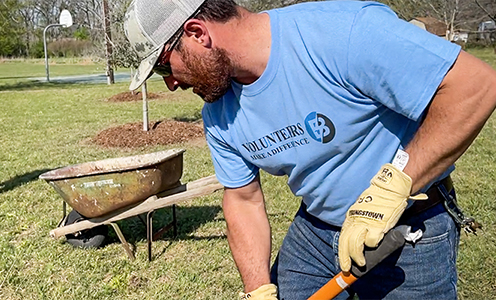A chicken snake, above left, met its untimely death when it slithered into the box behind a meter in The Colony just outside of Cedar Creek. (Mike Theurer photo)
BY MELISSA SEGREST
Why did the snake cross the multiwire electrified barrier? Probably to grab a bird or lizard.
Why didn’t matter much to several thousand Bluebonnet members this summer, when snakes caused three large outages. It’s what the trio of snakes did after they got past the barriers — a masterful feat in itself — that mattered.
They damaged electrical equipment and caused big power outages.
It may stretch credulity that a single serpent can create so much trouble. But in the first seven months of 2018, Bluebonnet had more than its share of animal-related power outages. From Jan. 1 through the end of July, snakes caused 60 outages, sometimes impacting a single home, and in a few circumstances, causing thousands of members to lose power.
Birds caused another 123 outages, including several in March that left more than 3,000 members temporarily without power. Squirrels caused 55 outages in the first seven months of 2018.
During the same seven-month period in 2017, Bluebonnet had 36 outages caused by snakes. That’s 24 fewer than that same time period this year.
Most of the outages are small: A single snake scales a power pole, stretches out and touches two pieces of energized equipment or touches an energized item and a piece of something grounded The resulting snake circuit damages equipment and can cause an outage.
Bluebonnet's 44 substations, mostly in rural areas, often provide power to thousands of members. Substation equipment is designed with pronged devices to discourage birds from nesting. Some energized equipment is covered to keep climbing animals at bay.
Bluebonnet stepped up its preventative measures in July and the number of snake-related outages dropped dramatically by August. But despite the best defenses, some critters still manage to get in and make that final fatal mistake.
“The cooperative strengthened its snake-barrier fence to include three electrified wires between PVC pipes that lie flat on the ground and surround substation equipment,” said Eric Kocian, Bluebonnet’s chief engineer and system operations officer. “Also, operators in Bluebonnet’s control center get an alarm every time something comes into contact with a snake fence’s electrified wires.”
Make no mistake — the snake fences work nearly every time. Each week Bluebonnet staff patrol inside substations’ perimeter fencing to remove what remains of many snakes that tried and failed to cross the lines. But birds can drop snakes from above. Once in a while, a big snake manages to slither through the shock, sometimes zapped enough to become airborne and land inside the danger zone, alive.
The activity has not been limited to specific regions of the cooperative’s 3,800-square-mile service area, Kocian said. Snakes have been equal opportunity offenders this year. After the early summer snake activity, Bluebonnet’s increased defenses greatly reduced the number of large outages.
Despite the problems they sometimes cause, Bluebonnet respects snakes' role in the ecosystem. We asked Paul Crump to elaborate. As the lead herpetologist at the Texas Parks and Wildlife Department, he offered some theories about this year of the snake. After holing up most of the winter, snakes emerge in spring to eat and possibly breed, he said.
“A couple of wet years means there was probably more food for them … and the snake population could have been higher,” he said. The hot, dry summer of 2018 may have prompted snakes to be “out and about longer, looking for better hiding places and more food. The hotter they are, the quicker they need to eat again,” Crump added.
With 35 species of snakes in Texas, Crump urges Bluebonnet members to be kind to the reptiles. “They provide many services for humans, such as controlling rodent populations. Snakebites are uncommon, and deaths from snakebite are even rarer in the U.S.,” he said. For more information about how to recognize venomous snakes, visit the Texas Parks and Wildlife website at https://bit.ly/1XtJap8.





